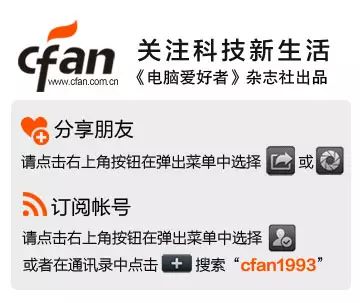In 2014, Intel leveraged its latest 14nm process to reduce the TDP of the performance-level Core M processor to 4.5W, enabling thin 2-in-1 devices like the iPad to possess strong productivity. With the maturity of the 14nm process and the emergence of the Skylake architecture, the second generation Core M has also entered the market. So, how does the second generation Core M perform?
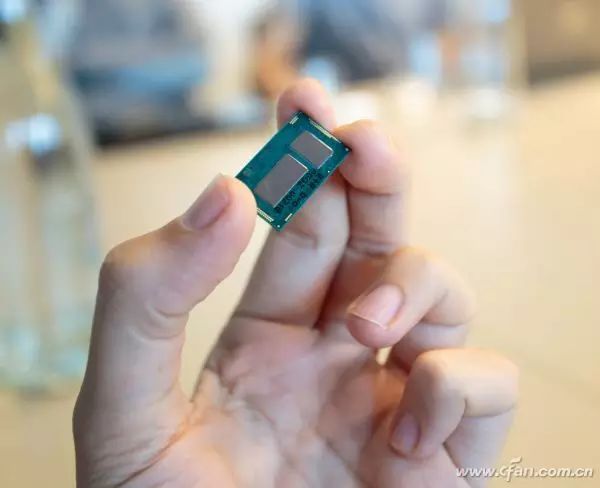
Intel’s Tablet Dream
Years ago, the success of the iPad and the decline of the PC industry prompted Intel to make a full-scale entry into mobile devices. The problem arose when Intel’s X86 processors were crammed into thin tablets; they required additional exaggerated cooling modules to alleviate the CPU’s “enthusiasm”. As a result, the first batch of Intel inside tablets often exceeded 15mm in thickness (Figure 1), losing the unique portability advantage of tablets. Thus, Intel began to modify its CPUs to allow them to fit into thinner mobile devices. Finally, in 2013, Intel launched the groundbreaking Ivy Bridge-Y and Baytrail-T product lines.
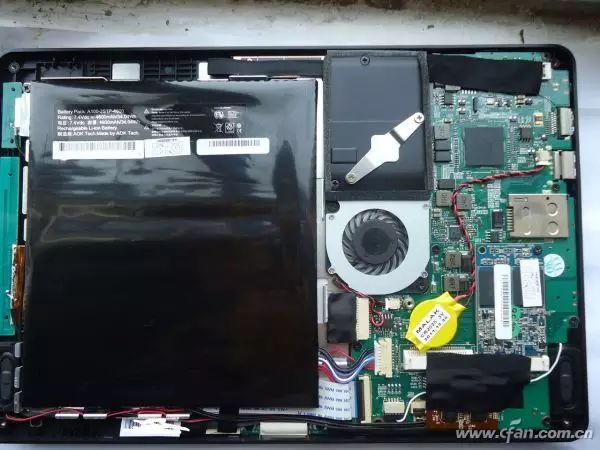
01 Caption: Internal structure diagram of the Hasee Feitian A10 designed with the Atom N2600 processor for netbooks.
Further Reading:
Before Baytrail-T, Intel also launched a fanless ultra-low power platform in 2012: Clover Trail, represented by the Atom Z2760 processor. The Samsung Smart PC-500T1C is an 11.6-inch Windows tablet designed based on this chip (Figure 2), with a very lightweight thickness of 9.9mm and weight of 760g. Unfortunately, the Atom Z2760’s performance struggled with even “Warcraft III”, and in some complex office fields, productivity was low. Therefore, such products did not create much of a wave. Users truly needed Windows tablets that could at least run games at the level of “League of Legends”.
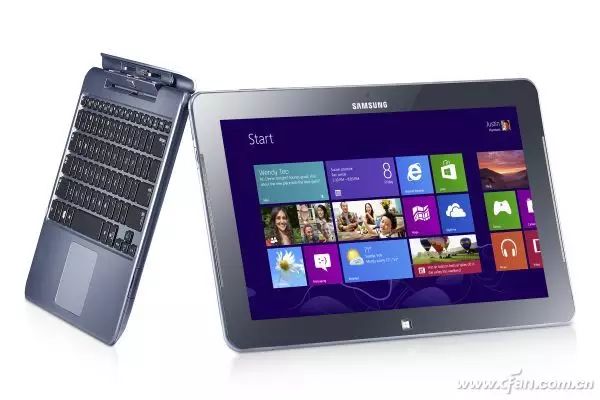
02 Caption: The Samsung Smart PC-500T1C, which was extremely thin at the time, unfortunately had performance as its biggest shortcoming.
The Evolution of the Y Series
The Ivy Bridge-Y belongs to the third generation of Core processors, with representative models including Core i7-3689Y, Core i5-3439Y, and Core i5-3339Y. Its biggest feature is that the package size was reduced to 31mm×24mm, and the TDP was lowered from Ivy Bridge-U’s 18W to 13W. At the same time, Intel also introduced the concept of “SDP” (Scenario Design Power), and Ivy Bridge-Y entered the market with a 7W SDP as a selling point. Due to the reduced heat generation and power consumption of Ivy Bridge-Y, only a thin silent fan was needed to alleviate the cooling pressure (Figure 3), making the Y series Core processors exclusive to performance-level tablets (or so-called 2-in-1 devices).
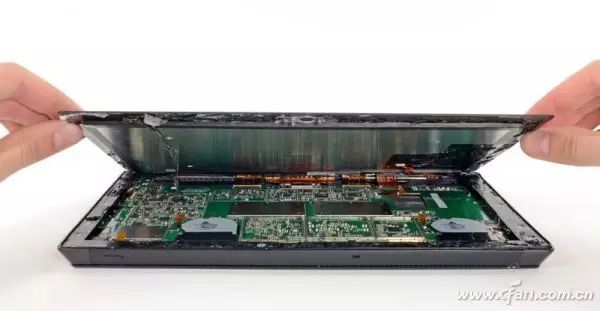
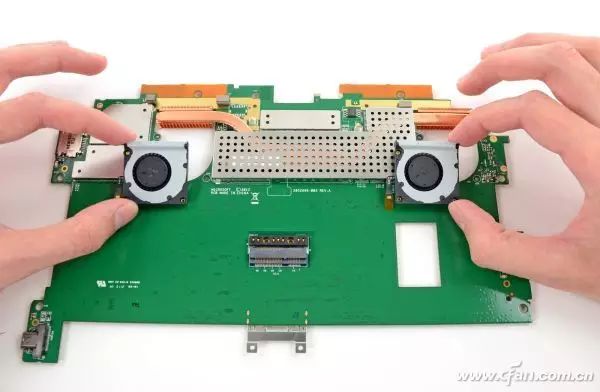
Caption: The first generation Microsoft Surface Pro equipped with the Core i5-3317u processor, using two ultra-thin small fans for cooling.
With the release of the fourth generation Core Haswell architecture, Haswell-Y took on the mission of Ivy Bridge-Y, with representative products including Core i3-4010Y and Core i5-4200Y. This generation of Y series processors not only saw improved performance but also reduced TDP and SDP from 13W and 7W to 11.5W and 6W, helping tablets to become even thinner.
Unfortunately, although Haswell-Y improved in power consumption and heat dissipation, it still required a cooling fan to ensure stable long-term operation due to the limitations of the 22nm process. No matter how thin or light the fan was, it was still a burden. At this time, the iPad Air had already achieved a “skinny” size of 7.9mm thickness and 500g weight. How could a performance-level Core processor break free from the constraints of a fan? The answer lay in relying on more advanced process technology.
In 2014, Intel’s latest 14nm process was finally mass-produced, and the first to debut was the Y series member of the fifth generation Core processors: Broadwell-Y (to ensure the production capacity of the Y series, the U and H series fifth-generation Core processors were delayed until Q1 2015 for mass production and market launch). The biggest highlight of Broadwell-Y was that it reduced the TDP to an unprecedented 4.5W, requiring only passive cooling (no fan, using heat sinks, heat pipes, and metal chassis for cooling) to alleviate the heat pressure (Figure 4). At the same time, the chip size of the Core M was significantly reduced compared to Haswell-Y, saving about 50% of the space (Figure 5).
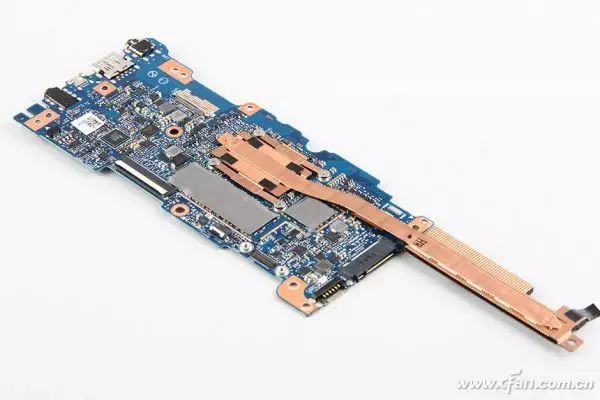
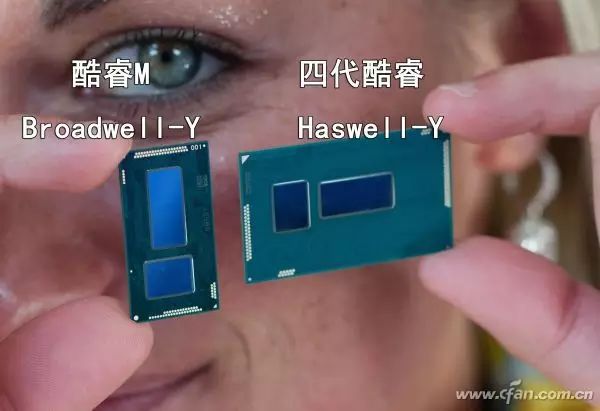
In order to document this historic product, Intel also gave Broadwell-Y a new name: Core M. With the help of Core M, Apple launched the new MacBook that broke the record for thin and light laptops (thickness of 13.1mm, weight of 0.9kg) (Figure 6), and more 2-in-1 devices successfully “slimmed down” based on Core M.
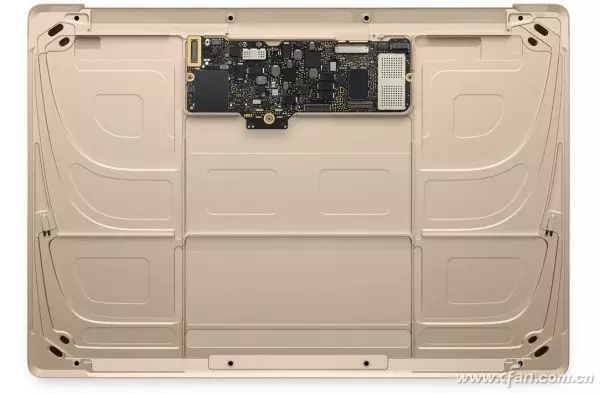
06 Caption: The motherboard of Apple’s new MacBook is very mini, integrating the Core M processor, SSD, and memory chips.
In 2015, Intel officially launched the sixth generation Core processor family, and the Skylake-Y, which maintained the 4.5W ultra-low power record, naturally attracted attention. As the second generation of Core M, does Skylake-Y have improved performance? Is it worth our expectations?
Further Reading: From Baytrail-T to CherryTrail
Baytrail-T is arguably one of Intel’s most successful mobile processors in recent years. Designed based on a 22nm process, it achieved an SDP as low as 2.2W after Intel’s optimization, meaning it could run stably without a fan. To promote Baytrail-T, Intel offered many incentives to OEM manufacturers, and Microsoft also took the opportunity to provide OEMs with free Windows 8.1 with Bing and Office 365 software, significantly reducing the cost of tablets designed based on Baytrail-T, making Windows 8.1 tablets priced as low as 399 yuan no longer a dream. In 2015, Baytrail-T’s successor, the 14nm CherryTrail, was officially launched, with representative products including Microsoft Surface 3 and Xiaomi Tablet 2 (Figure 7). Although CherryTrail has a quad-core advantage over Baytrail-T, its performance still lags significantly behind the dual-core Core M, mainly contributing to the tablet market under 2000 yuan.
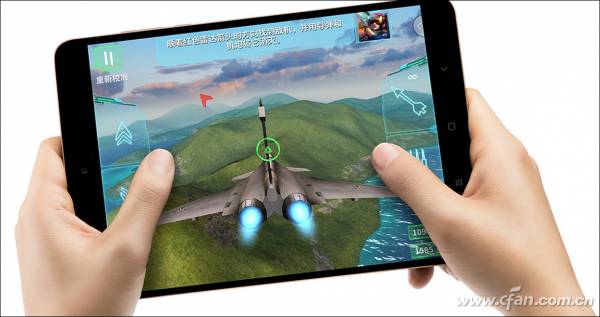
07 Caption: Xiaomi Tablet 2
Family Members of the Second Generation Core M
The Intel Skylake-Y family consists of four products, distinguished by Core M3, M5, and M7 (Table 1). They all adopt a dual-core quad-thread design and integrate the HD515 graphics core, featuring 4MB of L3 cache and a TDP of 4.5W. The main differences among the four processors lie in the CPU and GPU core frequencies. For instance, the lowest-end Core M3-6Y30 has a turbo frequency of 2.2GHz, while the highest-end Core M7-6Y75 has a turbo frequency that exceeds it by 900MHz. Thus, there will be a noticeable performance gap between different tiers of the second generation Core M.

What Changes in the Second Generation Core M
The first generation Core M (Broadwell-Y) was prone to overheating and throttling due to immature processes and designs. Therefore, OEM manufacturers could adjust the throttling temperature threshold based on their product’s thermal design, resulting in significant performance differences among different Core M devices. For example, some low-cost Core M tablets scored only around P500 in 3DMark11, while some mid-to-high-end products could reach P800. In summary, the better the thermal design of the Core M device, the higher its benchmark performance.
The second generation Core M (Skylake-Y) solved the issue of passive cooling being incompatible with tablets, and the improved microarchitecture, combined with Intel’s deep understanding and optimization of the 14nm process, gave the second generation Core M better thermal control (Figure 8). Let’s take a look back; most tablets designed based on the first generation Core M started with an 11.6-inch screen, aiming to utilize larger internal space to alleviate heat pressure.
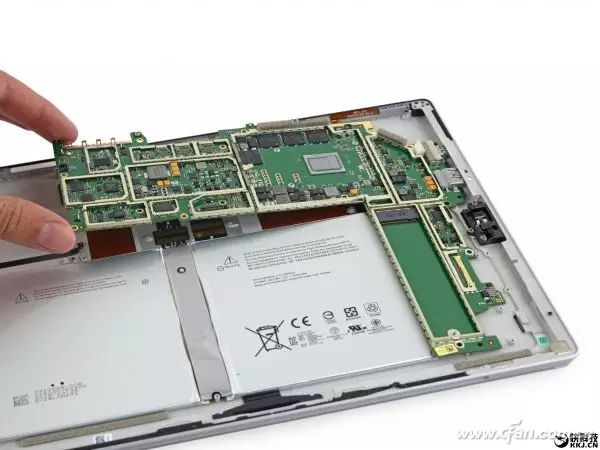
08 Caption: The low-end version of Microsoft Surface Pro 4 equipped with the Core M3-6Y30 processor.
The proof of the second generation Core M’s improved cooling is that Intel has launched a TV stick equipped with this chip (codenamed “Cedar City”), which is similar in size to a large flash drive (Figure 9), demonstrating Intel’s confidence in the cooling capabilities of the second generation Core M. The reason the second generation Core M can fit into devices the size of a TV stick is largely due to the further reduction in package size. As shown in Figure 10, Skylake-Y’s size is about 33% smaller than Broadwell-Y!
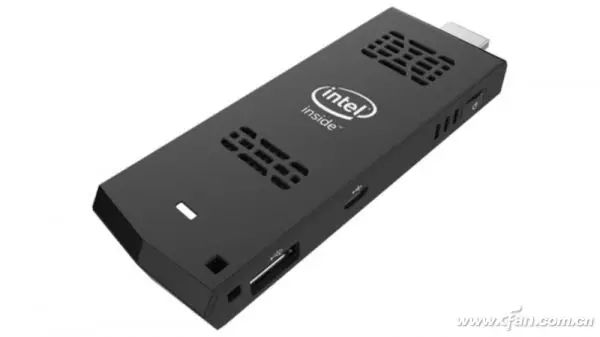
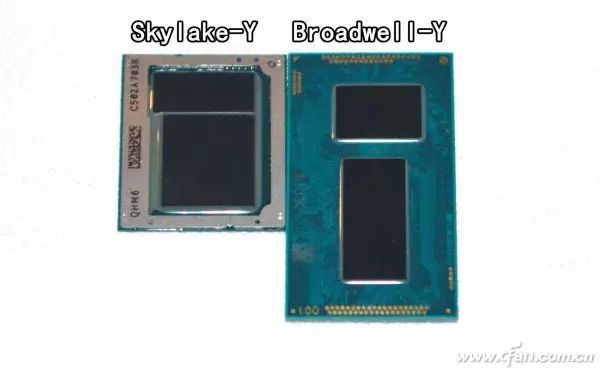
The improvement in heat generation and power consumption has led to an increase in battery life. It is reported that Intel has enabled complete SoC power gating for the second generation Core M, allowing the CPU cores to completely shut down when idle. Combined with adaptive screen refresh rates and improvements in the PCH, under a 35Wh battery configuration, the second generation Core M can increase battery life by 1.4 hours compared to the first generation Core M, surpassing the 10-hour mark. Additionally, the second generation Core M natively supports Thunderbolt and USB Type-C interfaces, but due to cost limitations, very few products directly provide these emerging interfaces.
The good news is that the reduction in package size and the decrease in temperature and power consumption have not affected the performance of the second generation Core M. First, Intel has opened a wider adjustable range for the second generation Core M, allowing its TDP to fluctuate between 3.5W and 7W (the first generation Core M was 3.5W to 6W), enabling it to run stably at higher frequencies for extended periods. Furthermore, the integrated HD515 graphics core of the second generation Core M has also evolved to Gen9 architecture, officially supporting DX12 (the architecture of the first generation Core M graphics core was Gen9, only supporting up to DX11.2).
Quick Links
For more technical details about the sixth generation Core processor Skylake, please refer to our publication’s 2015 issue 19 article “Before Popularization: An Overview of Intel Skylake Mobile Processors”.
Real Performance Comparison
The saying goes, “You have to take it out for a walk to see if it’s a horse or a donkey.” It’s now time for the second generation Core M’s real performance assessment. For comparison, I found representatives from Baytrail-T, CherryTrail, Broadwell-Y, and Haswell-U to compete alongside Skylake-Y. Among them, Baytrail-T is primarily used in Windows 8.1 tablets priced between 400 and 1000 yuan, CherryTrail is used in Windows 10 tablets priced at 1000 yuan or higher, Broadwell-Y targets products priced at 2000 yuan or higher, while Haswell-U represents the performance level of standard laptops priced at 3000 yuan.
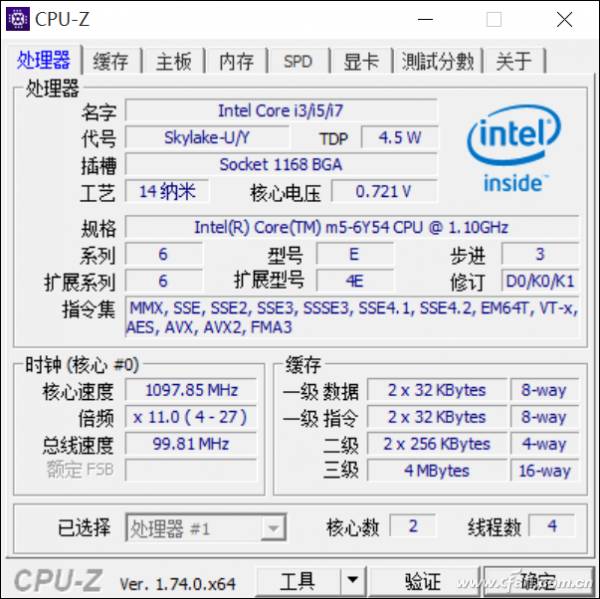
11 Caption: CPU-Z software screenshot of the Core M5-6Y54.
Through practical testing, it is not difficult to find that the representative of Skylake-Y: Core M5-6Y54 (Figure 11) can outperform the representatives of Baytrail-T and CherryTrail in overall performance, while also showing a slight improvement over the Core M-5Y10c of the Broadwell-Y platform (Table 2). It is important to note that the Core M5-6Y54 has a clock speed that is 700MHz higher than that of the Core M-5Y10c, and the true competitor of the latter should be the Core M3-6Y30. Given the significant clock speed advantage, the Core M5-6Y54 still did not manage to pull away from the Core M-5Y10c by much, which is somewhat disappointing.
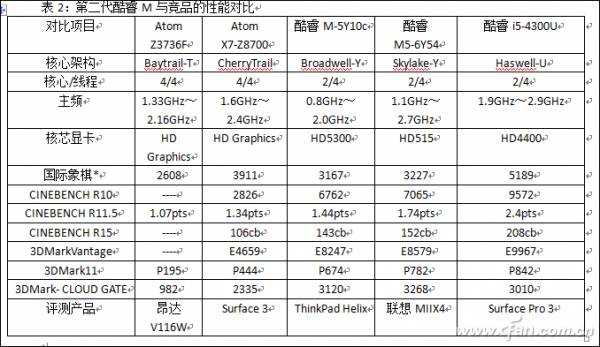
In summary, performance is not the focus of the improvements in the second generation Core M; better thermal management and power control are its key advantages in the tablet market. Let’s look at the positive side: if we compare the Core M5-6Y54 with the Core i5-4300U of the Haswell-U architecture, the Core M5-6Y54 already possesses about 80% of the latter’s performance, and there are no significant bottlenecks for either office or entertainment tasks.
Conclusion
By the time you receive this magazine, Intel’s sixth generation Core Skylake should have been fully popularized, and tablets and 2-in-1 devices based on Skylake-Y will become mainstream in the market. Lighter, thinner, and longer-lasting battery life will become the unique labels of second generation Core M devices (Figure 12), making them worthy of being included in our top procurement choices if the budget allows.
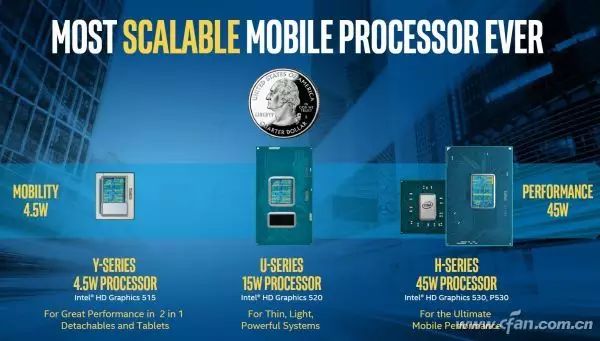
12 Caption: Comparison of Skylake family Y, U, and H series chips.
